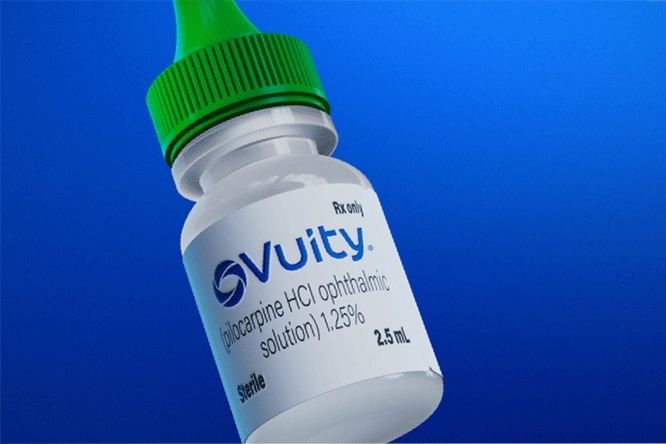
Amoebic dysentery, caused by the protozoan parasite Entamoeba histolytica, is a significant public health concern, particularly in regions with poor sanitation and hygiene. It manifests as a severe form of amoebiasis, characterized by inflammation of the colon, abdominal pain, fever, and bloody, mucoid diarrhea. Left untreated, it can lead to severe complications such as toxic megacolon, intestinal perforation, and extraintestinal manifestations like amoebic liver abscess. Effective management necessitates a comprehensive approach, involving accurate diagnosis, targeted pharmacotherapy, and supportive care.
Understanding Amoebic Dysentery and Treatment Principles
Before constructing a prescription, a firm understanding of the disease’s pathophysiology and therapeutic goals is crucial. Entamoeba histolytica exists in two main forms: the cyst (infectious stage, found in the environment and passed in stool) and the trophozoite (invasive, pathogenic stage, found in the gut lumen and tissues). Amoebic dysentery occurs when trophozoites invade the colonic mucosa, causing inflammation and ulceration.
The primary goals of treatment are twofold:
- Eradicate invasive trophozoites: This addresses the acute symptoms and prevents tissue damage and extraintestinal spread.
- Eliminate intraluminal cysts and trophozoites: This prevents recurrence of symptoms, reduces the risk of asymptomatic carriage, and stops further transmission.
Therefore, a typical treatment regimen involves a combination of a tissue-active amoebicide and a luminal amoebicide.
Comprehensive Patient Assessment and Diagnosis Confirmation
The initial step involves a thorough patient assessment to confirm the diagnosis, evaluate disease severity, and identify any factors that might influence treatment choices.
- Clinical Presentation: Gather a detailed history of symptoms, including onset, frequency, character of stool (bloody, mucous), abdominal pain, fever, tenesmus, and any associated systemic symptoms. Inquire about travel history, exposure to contaminated food/water, and household contacts with similar symptoms.
- Physical Examination: Assess hydration status (skin turgor, mucous membranes, capillary refill), vital signs (fever, tachycardia), and perform an abdominal examination (tenderness, distension).
- Laboratory Confirmation:
- Stool Microscopy: The gold standard involves identifying E. histolytica trophozoites (often containing ingested red blood cells, differentiating them from non-pathogenic E. dispar) or cysts in fresh stool samples. Multiple samples may be required due to intermittent shedding.
- Molecular Methods (PCR): Highly sensitive and specific, PCR can differentiate E. histolytica from E. dispar and other amoebae.
- Serology: Antibody tests (e.g., ELISA) are useful for diagnosing invasive extraintestinal amoebiasis (like amoebic liver abscess) but are less helpful in acute intestinal amoebiasis as antibodies may not be present early.
- Rule out Bacterial Dysentery: Stool culture and sensitivity are essential to exclude bacterial pathogens (e.g., Shigella, Salmonella, Campylobacter, enteroinvasive E. coli) that can present similarly, as their treatment differs.
- Identify Modifying Factors: Assess:
- Allergies: To any medications, especially nitroimidazoles.
- Comorbidities: Liver disease, renal impairment, immunocompromised status.
- Current Medications: Potential drug interactions.
- Pregnancy/Lactation Status: Crucial for drug selection.
- Age and Weight: For pediatric dosing.
Selecting the Appropriate Tissue Amoebicide
Tissue amoebicides target the invasive trophozoites in the intestinal wall and other tissues. These agents are crucial for resolving acute dysentery and preventing extraintestinal complications.
- Metronidazole:
- Mechanism of Action (MOA): A nitroimidazole derivative, it acts as a prodrug that is reduced intracellularly by anaerobic organisms and sensitive protozoa (including E. histolytica trophozoites) to form reactive cytotoxic compounds that damage DNA and other macromolecules.
- Dosage:
- Adults: 500-750 mg orally three times daily (TID) for 7-10 days.
- Children: 35-50 mg/kg/day orally in three divided doses for 7-10 days (maximum 2250 mg/day).
- Route: Oral is preferred; intravenous (IV) administration is reserved for severe cases, patients unable to tolerate oral medication, or those with amoebic liver abscess requiring hospitalization.
- Side Effects: Nausea, vomiting, diarrhea, abdominal cramps, metallic taste, headache, dizziness, dark urine. A disulfiram-like reaction (flushing, palpitations, nausea, vomiting) can occur with alcohol consumption, so patients must be advised to abstain from alcohol during and for at least 48-72 hours after treatment.
- Contraindications/Precautions: First trimester of pregnancy (relative), severe liver disease.
- Tinidazole:
- MOA: Similar to metronidazole, but often has a longer half-life, allowing for shorter treatment durations.
- Dosage:
- Adults: 2 g orally once daily for 3-5 days; or 500 mg orally twice daily (BID) for 5 days.
- Children: 50 mg/kg orally once daily for 3 days (maximum 2 g/day).
- Side Effects: Generally similar to metronidazole but often better tolerated with less gastrointestinal upset. Same alcohol interaction warning applies.
- Advantages: Shorter treatment course, potentially better compliance.
- Other Nitroimidazoles (Ornidazole, Secnidazole): May be used in some regions with similar efficacy, dosages, and side effect profiles.
Selecting the Appropriate Luminal Amoebicide
Luminal amoebicides act within the intestinal lumen to eradicate cysts and trophozoites that have not invaded the tissue. This step is critical to prevent relapse and interrupt the transmission cycle. A luminal agent must follow or be co-administered with a tissue amoebicide, especially after treating invasive disease.
- Diloxanide Furoate:
- MOA: Acts directly on amoebae in the intestinal lumen, with minimal systemic absorption.
- Dosage:
- Adults: 500 mg orally TID for 10 days.
- Children: 20 mg/kg/day orally in three divided doses for 10 days.
- Side Effects: Generally well-tolerated, mild flatulence, nausea, vomiting.
- Considerations: Not available in all countries (e.g., not approved by FDA in the USA).
- Iodoquinol (Diiodohydroxyquin):
- MOA: Halogenated hydroxyquinoline, primarily active against luminal trophozoites and cysts.
- Dosage:
- Adults: 650 mg orally TID for 20 days.
- Children: 30-40 mg/kg/day orally in three divided doses for 20 days (maximum 2 g/day).
- Side Effects: Gastrointestinal upset (nausea, diarrhea, abdominal cramps). Rarely, optic neuritis has been reported with very high doses or prolonged use, so adherence to recommended duration is important.
- Paromomycin:
- MOA: An aminoglycoside antibiotic that is poorly absorbed from the gastrointestinal tract, making it effective against luminal amoebae.
- Dosage:
- Adults: 500 mg orally TID for 7 days.
- Children: 25-35 mg/kg/day orally in three divided doses for 7 days.
- Side Effects: Primarily gastrointestinal (nausea, abdominal cramps, diarrhea). Safe in pregnancy due to minimal absorption.
Formulating the Combined Treatment Regimen
For amoebic dysentery (invasive intestinal amoebiasis), a sequential or concurrent combined regimen is mandatory.
- Standard Regimen for Amoebic Dysentery (Adult Example):
- Invasive Phase Treatment: Metronidazole 750 mg orally TID for 7-10 days.
- Followed by Luminal Clearance: Diloxanide Furoate 500 mg orally TID for 10 days (or Iodoquinol 650 mg TID for 20 days, or Paromomycin 500 mg TID for 7 days).
- Important Note: The luminal agent should always be administered after or concurrently with the tissue amoebicide to ensure complete eradication and prevent recurrence. In severe cases, or if a high burden of luminal parasites is suspected to be contributing to symptoms, concurrent administration may be considered.
Incorporating Supportive Care and Symptomatic Relief
Supportive measures are crucial for managing symptoms and preventing complications.
- Fluid and Electrolyte Management:
- Oral Rehydration Solution (ORS): Essential for mild to moderate dehydration. Advise frequent, small sips.
- Intravenous (IV) Fluids: For severe dehydration, inability to tolerate oral fluids, or significant electrolyte imbalances. Monitor serum electrolytes closely.
- Antipyretics/Analgesics:
- Paracetamol (Acetaminophen): 500-1000 mg every 4-6 hours as needed for fever and abdominal pain.
- Nutritional Support: Encourage easily digestible, bland foods.
- Anti-motility Agents (e.g., Loperamide): CRITICAL CAUTION: These agents are generally contraindicated in amoebic dysentery (and other forms of infective dysentery) as they can prolong the infection, increase the risk of toxic megacolon, and worsen clinical outcomes by trapping parasites/toxins in the bowel. This must be explicitly communicated to the patient.
Writing the Prescription
A complete and clear prescription is essential for patient safety and effective treatment. It typically includes the following components:
- Prescriber Information: Name, address, phone number, professional license number.
- Patient Information: Full name, date of birth, age, gender, date of prescription.
- “Rx” Symbol (Superscription): Indicating “take thou” or “prescription.”
- Inscription (Drug Details):
- Drug Name (Generic preferred, followed by brand if necessary).
- Strength (e.g., 500 mg).
- Dosage Form (e.g., Tablets, Capsules, Suspension).
- Subscription (Dispensing Instructions for Pharmacist):
- Quantity to be dispensed (e.g., #21 for 7 days of TID).
- Signatura (“Sig”) (Instructions for Patient):
- Dose (e.g., “One tablet”).
- Frequency (e.g., “three times daily”).
- Route (e.g., “by mouth”).
- Specific instructions (e.g., “with food,” “complete the full course,” “avoid alcohol”).
- Duration of treatment.
- Refills: Typically “No Refills” for acute infections.
- Prescriber’s Signature and Date.
Example Prescription (for an adult patient with amoebic dysentery):
[Your Clinic/Hospital Letterhead]
[Your Name, Title, License #]
[Your Address, Phone]
Date: [Current Date]
Patient Name: [Patient Full Name]
DOB: [Patient's Date of Birth]
Age: [Patient's Age]
Sex: [Patient's Sex]
Rx:
1. **Metronidazole 500 mg Tablets**
Dispense: #21 (Twenty-one)
Sig: Take one (1) tablet by mouth three times daily for 7 days.
(_*Instructions: Must be taken with food to reduce stomach upset. AVOID all alcohol during treatment and for 3 days after stopping this medication._)
2. **Diloxanide Furoate 500 mg Tablets**
Dispense: #30 (Thirty)
Sig: Take one (1) tablet by mouth three times daily for 10 days.
(_*Instructions: Begin this medication immediately after completing the Metronidazole course._)
3. **Oral Rehydration Salts (ORS) Sachets**
Dispense: #10 (Ten)
Sig: Dissolve one sachet in 1 liter of clean water. Drink frequently in small sips throughout the day, especially after each loose stool, to prevent dehydration.
4. **Paracetamol 500 mg Tablets**
Dispense: #10 (Ten)
Sig: Take one (1) to two (2) tablets by mouth every 6 hours as needed for fever or abdominal pain. Do not exceed 8 tablets in 24 hours.
Refills: None (for all medications)
___________________________
[Your Signature]
[Your Printed Name and Title]
[Your Professional License Number]
Patient Education and Follow-up
Effective patient education is paramount for successful outcomes and preventing recurrence and transmission.
- Medication Adherence: Emphasize the importance of completing the full course of both medications, even if symptoms improve, to ensure complete eradication of the parasite.
- Side Effects: Inform patients about potential side effects and when to seek medical attention (e.g., persistent vomiting, severe rash, unusual symptoms). Reiterate the alcohol interaction with metronidazole/tinidazole.
- Hygiene Practices: Crucial for preventing spread. Advise thorough handwashing with soap and water after using the toilet and before preparing/eating food.
- Safe Food and Water: Counsel on consuming only boiled or bottled water, avoiding raw fruits and vegetables (unless peeled by the patient), and properly cooked food.
- Dietary Advice: Suggest a diet of bland, easily digestible foods while recovering.
- When to Seek Urgent Care: Worsening abdominal pain, persistent high fever, increased bloody diarrhea, signs of severe dehydration, or confusion.
- Follow-up: Schedule a follow-up visit. For recurrent or persistent symptoms, repeat stool examination (after 2-4 weeks post-treatment) is recommended to confirm eradication, especially in food handlers or immunocompromised individuals.
Special Considerations
- Pregnancy and Lactation: Metronidazole is generally considered safe in the second and third trimesters of pregnancy. Paromomycin is preferred as a luminal agent due to its minimal systemic absorption. Diloxanide furoate or iodoquinol should be used with caution, weighing risks and benefits.
- Children: Dosing must be carefully calculated based on weight. Suspensions are often available for easier administration.
- Amoebic Liver Abscess or Severe Extraintestinal Disease: Requires aggressive therapy, often with IV metronidazole for an extended duration, sometimes followed by a luminal agent. Surgical drainage or aspiration may be necessary.
- Asymptomatic Cyst Passers: Individuals who are asymptomatic but pass E. histolytica cysts in their stool should be treated with a luminal amoebicide (e.g., Diloxanide Furoate, Iodoquinol, Paromomycin) to prevent transmission, especially in healthcare workers, food handlers, or institutional settings.
Conclusion
Constructing a prescription for amoebic dysentery requires a systematic and evidence-based approach. It begins with a thorough understanding of the disease, precise diagnosis, and careful selection of a combined regimen targeting both tissue and luminal forms of Entamoeba histolytica. The prescription must be clear, comprehensive, and accompanied by detailed patient education on medication adherence, potential side effects, supportive care, and hygiene practices. By following these steps, healthcare professionals can ensure effective treatment, prevent complications, and contribute to public health by interrupting the transmission cycle of this challenging parasitic infection. Always remember that this guide provides general principles; specific patient circumstances may necessitate individualized adjustments and should always be guided by professional medical judgment.
References:
- World Health Organization. (2010). WHO guidelines on the treatment of amoebiasis. WHO Press. (While slightly older, it forms the basis for many current clinical guidelines regarding treatment strategies for amoebiasis).
- Centers for Disease Control and Prevention (CDC). (2023). Parasites – Amebiasis. Retrieved from https://www.cdc.gov/parasites/amebiasis/health_professionals/index.html (Provides up-to-date clinical information, diagnosis, and treatment recommendations from a major public health authority).
- Ryan, E. T., & Hill, D. R. (2023). Intestinal amoebiasis. In J. E. Bennett, R. Dolin, & M. J. Blaser (Eds.), Mandell, Douglas, and Bennett’s Principles and Practice of Infectious Diseases (10th ed.). Elsevier. (A comprehensive medical textbook chapter offering detailed insights into the epidemiology, pathophysiology, diagnosis, and treatment of amoebiasis).
- UpToDate. (2023). Treatment of amebiasis. Retrieved from https://www.uptodate.com/contents/treatment-of-amebiasis (Subscription required for full access, but widely used by clinicians for evidence-based practice). (A frequently updated, peer-reviewed clinical resource providing practical guidance on drug choices, dosages, and special considerations).
- Pharmacology Textbooks (e.g., Katzung, B. G., Masters, S. B., & Trevor, A. J. (2021). Basic & Clinical Pharmacology (15th ed.). McGraw Hill Education.): Chapters on anti-protozoal drugs, specifically nitroimidazoles and luminal amoebicides for detailed drug pharmacology.







